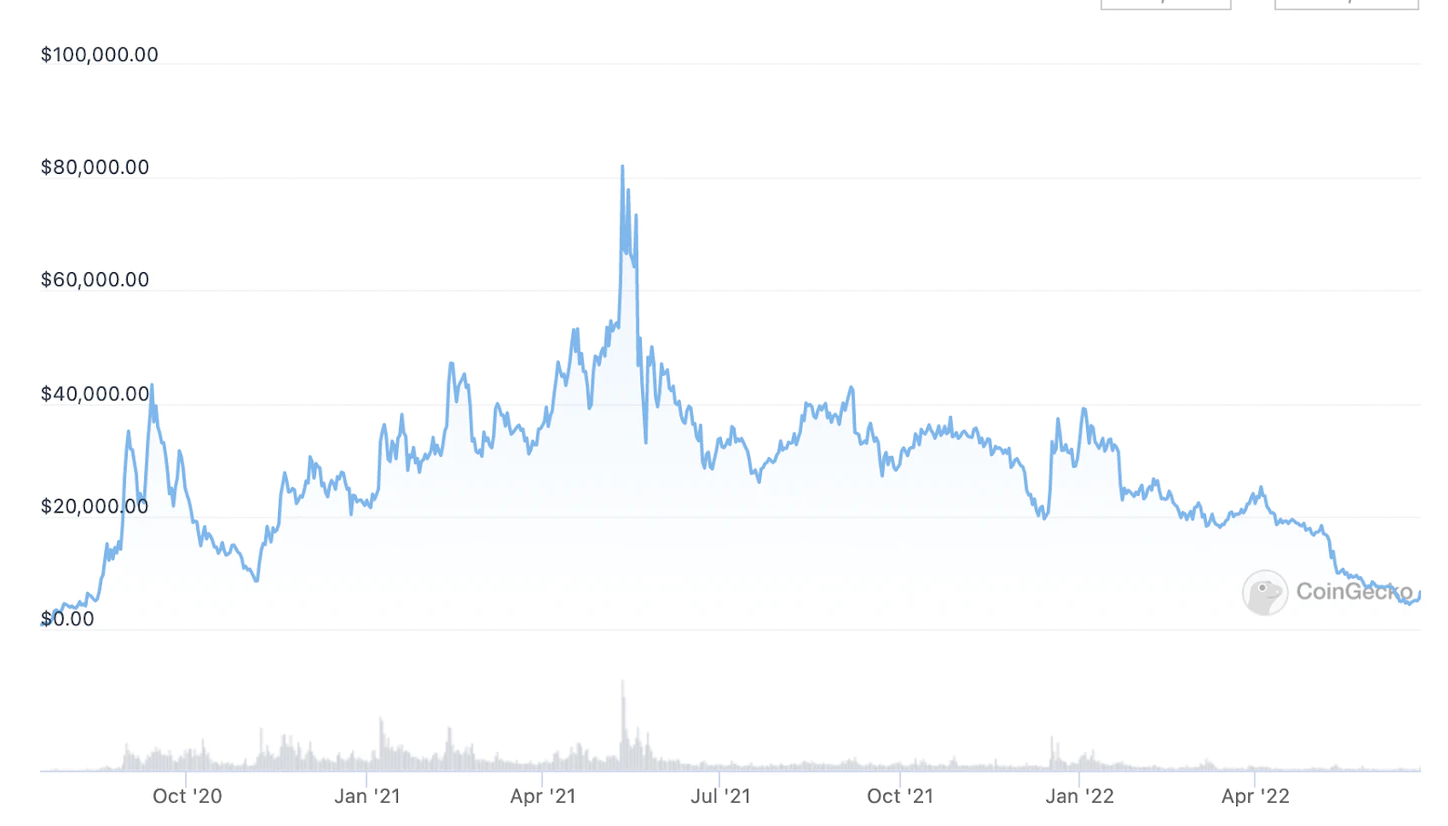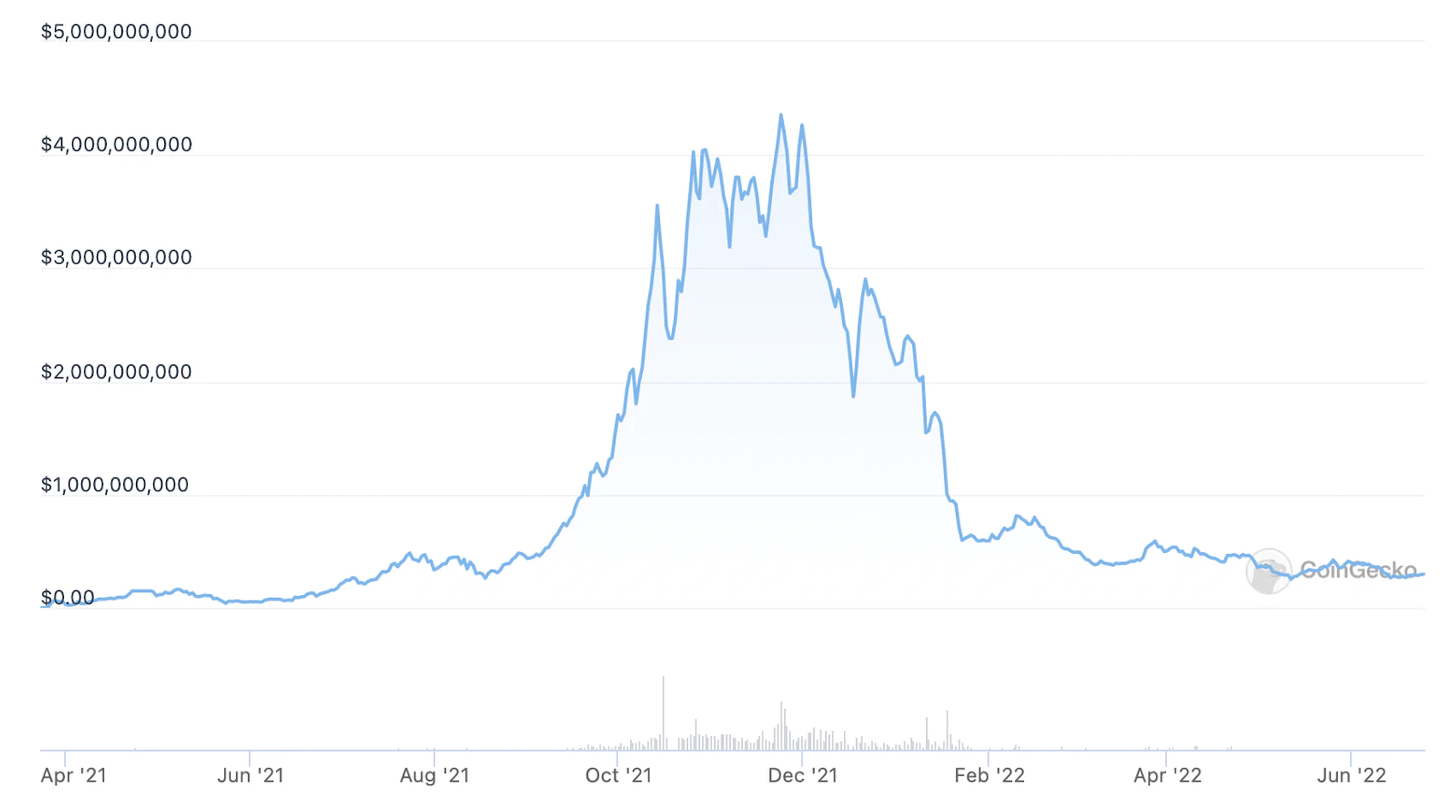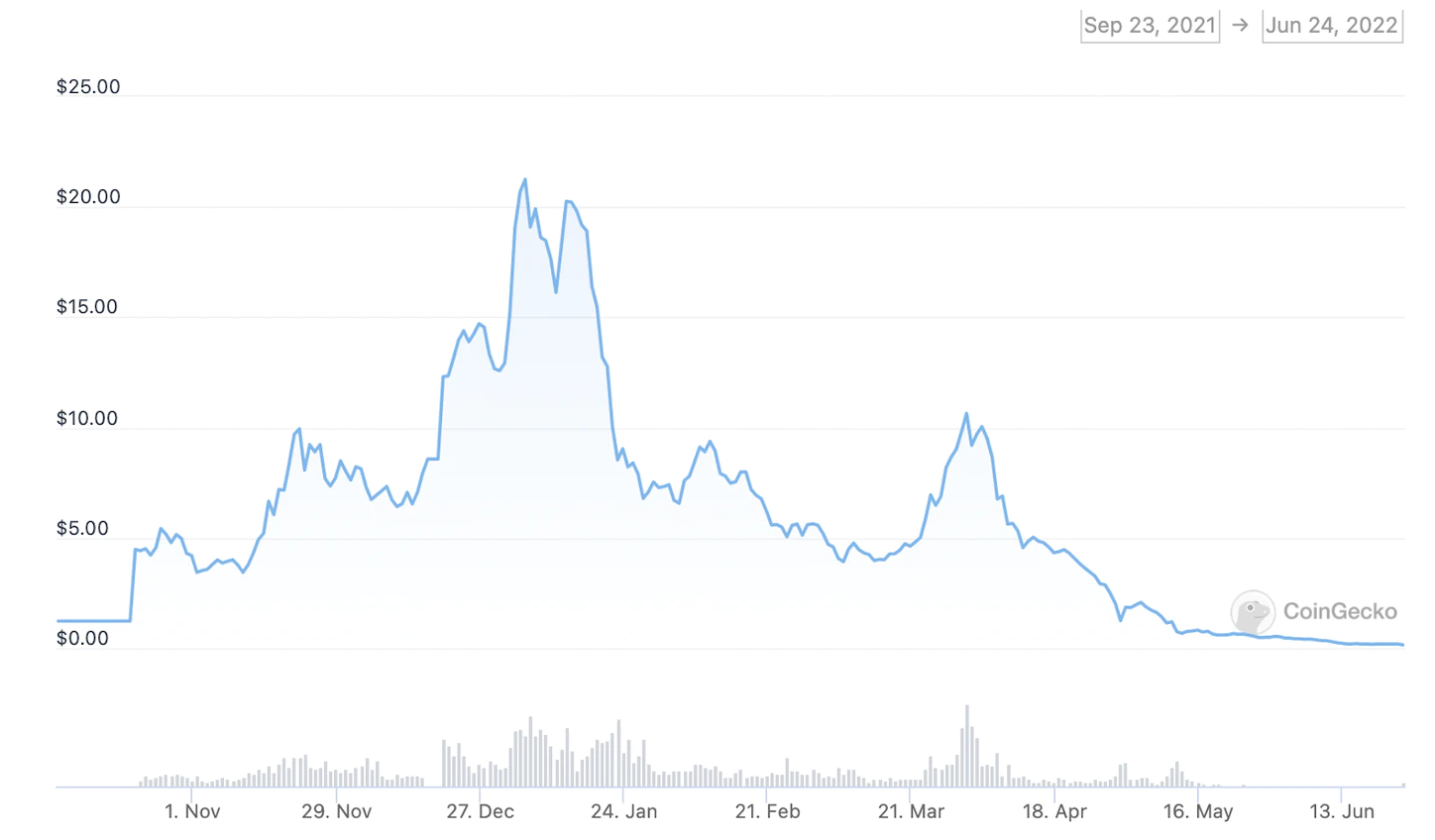After going through this cycle, I have summarized these six major mistakes and lessons
Author: Nat Eliason
Original Title: 《My Crypto Investing Mistakes and Lessons ('20-'22)》
Translation: DeFi Path
Alright, folks, it seems the happy times are over, and the bear market may last for a while.
Looking back at the year and a half bull market from 2020 to 2022, the entire crypto space was crazy. Many old friends, if not making a fortune, at least had some gains. Of course, there were also some very tough moments during the bull market. Besides the losses in paper wealth, I believe the mental experiences of fully participating in the cryptocurrency bull market cycle should not be underestimated.
I mentioned "fully participating" because this was my first time fully immersing myself in the cryptocurrency bull market. I became interested in cryptocurrency in 2013, primarily through the gray market of early DOTA2, where I encountered Bitcoin.
In 2017, I developed a greater interest in cryptocurrency. I published a few articles about cryptocurrency at that time and read all the groundbreaking stuff available then, but I still hadn't truly ventured into the field.
This bull market was actually my first real immersion cycle. What was that experience like? Obviously, everything is still operating in an orderly manner; teams are still building projects, and crypto Twitter is still churning out some garbage content. However, we cannot deny that the atmosphere in the entire crypto space has likely dropped by 90%, just like the prices.
We should reflect on our investment strategies before making mistakes, but doing so isn't very fun, is it? Moreover, before losses occur, you don't really know what you did wrong. A common mistake people make is evaluating past decisions with current experiences and heights. But no one could have known when the Russia-Ukraine conflict would start, nor when the Federal Reserve would announce interest rate hikes, or foresee any other potential conspiracies that could take away our digital assets.
Therefore, I took some time to reflect on what I did well during the past year and a half of the bull market and where I made mistakes. Since people enjoy seeing others make mistakes, and these lessons are certainly more useful, let's start with the mistakes I made. Perhaps I will write a separate post later titled "What I Did Right."
Here are some mistakes and lessons I summarized through reflection:
1. Not Taking Profits in Time
This is one of the most common mistakes I made. I am a long-term investor in cryptocurrency, so I believe Ethereum and Bitcoin are the best long-term investment assets, but I really acted foolishly with the altcoins I invested in.
I bought a bunch of TOKE at $30 and held it until it was close to $80, only to hold on until the price dropped to $2.
I bought a bunch of ALCX at $200 and held it until $400, only to hold on until the price dropped to $20.
I held LUNA, MATIC, and JEWEL for a very long time, along with OHM, TIME, and a whole bunch of altcoins. Clearly, looking back, it's easy to say, "Damn, if I had sold at the perfect time, I would have made a lot of money!" Many times, these altcoins rose 20% to 100% compared to Ethereum, but I did absolutely nothing.
That was just plain stupid. My goal was to increase the amount of Ethereum I was holding, yet I believe most of my trades were doing the opposite.
Only once did I do what I should have done. I discovered some projects early, chose a reasonable price to try to buy in, and set a sell price. Once the price reached that level, I would sell a certain amount of tokens, and I followed this rule almost perfectly. When I wrote the article on JONES, I bought a lot at $5 and sold most of my position at $13 because I knew investor unlocks were coming.
On a broader level, when cryptocurrency started to exceed my target net worth allocation, I should have taken profits from cryptocurrency. Earlier in 2021, I had overall financial goals, including the proportions of cryptocurrency, real estate, indices, etc., in my portfolio. However, as cryptocurrency prices rose, I completely forgot my initial goals. This wasn't even intentional; I genuinely forgot.
It wasn't until I started considering buying a house that I recalculated and realized things had become very abnormal. So, I began actively withdrawing some funds from cryptocurrency in early 2022, which saved my life. Of course, I still didn't take out enough money; I should have started doing this earlier, but regardless, my decision looks correct in hindsight.
The insight I gained from this lesson is to create time to reflect on my net worth allocation and to rebalance my assets more intentionally, establishing corresponding rules for taking profits.
2. Too Many Focus Points
Adam Smith wrote something brilliant in The Money Game:
The greatest safety lies in putting all your eggs in one basket and watching that basket. If your investments are concentrated in just a few stocks, you must measure each stock against every new idea that arises, which in turn affects your base position.
We easily think we should try to get some profits from everything. In some ways, our thinking has been distorted by index fund investing, believing it's the best strategy, but index funds are a basket of stocks. What we need to do in cryptocurrency is to choose a few high-conviction bets and stick with them, judging other coins based on those bets.
My highest-conviction bets are Ethereum, MATIC, SOL, CVX, and ALCX. If I had only held these cryptocurrencies and compared all other tokens to them, I might have chosen to invest in other better tokens and then dumped the underperforming ones, which would have been a better strategy. My ALCX ultimately went to zero, but the others performed well.
Instead, I put money into basically every meaningful project. I joined dozens of Discords I couldn't keep up with and lost a lot of money on projects I didn't research enough. I developed a fear of some projects, held them for too long, and didn't cut losses in time; overall, this approach yielded no benefits.
Now, I have consolidated almost all the projects I invested in, and I should have done this sooner. Ignoring all new things is really hard, but I believe it's a better strategy than trying to get a piece of every project.
3. Not Recognizing the Relationship Between DeFi Mining and Investment
Cryptocurrency, especially DeFi projects, often faces an unfortunate reality: even good projects with solid tokenomics may not be good investments if their mining is too profitable.
I think TOKE is a great example of this. I believe in their product and like their development, but they have quite high yield distributions. People come to the platform to mine and then choose to dump it massively when the large distribution starts to slow down. When TOKE performs well and the TOKE/ETH pair rises by 150%, people choose to hold it, but when that stops, they immediately sell.
Even with a good project, you must recognize that most people involved in cryptocurrency are in it for short-term gains. Trying to be a value investor, except for absolute top network tokens (Bitcoin, Ethereum, and perhaps a few others), may be a bad idea.
Anything that can be mined and sold will have the same outcome. Don't try to be a hero for a project; don't hold on just because you believe in it. And don’t naively think that anything with distributions and liquidity rewards will yield significant returns, as that is a large part of why it is considered valuable.
4. Misunderstanding Small Hype Cycles
While the broader cryptocurrency market is experiencing a hype cycle, there are also many small hype cycles within each major cycle.
The first was DeFi summer, which started in the summer of 2020 and lasted until autumn, showing signs of fatigue by last winter and dying in the spring of this year. The price chart of Yearn captures this well. DeFi began to die when it crashed in May 2021.

Next was the frenzy around profile pictures, which started around May and June and lasted until autumn. Bored Apes kicked off the small picture hype, but by the end of the hype, it seemed like there were low-quality small picture projects launching every day. I bought a lot of stupid things (though these weren't my projects, many friends learned about and even bought some small pictures from my articles, and I feel sorry for those still involved in these projects).

Then came the OHM forks frenzy, which lasted from last autumn to winter, and you can see its trend well from the market cap chart of Olympus.

There were also other small narrative cycles, like the GameFi frenzy, which you can see in the price chart of JEWEL.

The point I want to make about these small cycles is that everyone is looking for the next big winner. These hype cycles have been occurring in different areas, following a somewhat predictable pattern:
- Blue-chip cryptocurrencies, original version projects start to take off (Bitcoin, Punks, Axie, Olympus, etc.)
- Prices of some derivatives start to soar (Solana, Cool Cats, DeFi Kingdom, Wonderland, etc.)
- When people miss the second phase and start to FOMO, all project prices take off.
Every time I entered during the third phase, I lost money. And when I smartly exited during the second phase, I did well.
One of my best investments was in the Bored Ape Yacht Club. Early in the PFP frenzy, I bought a Bored Ape for 4 Ethereum and sold it for 61 Ethereum when my friends outside the crypto space started asking me what NFTs to buy, and Lazy Lions' prices began to soar. Although I didn’t know what Lazy Lions were, some of that information felt like a doomsday signal to me, as that was when the NFT market began entering the third phase, and I sold most of my NFTs.
However, with Olympus, I made a mistake. I not only missed my position in the hype cycle but also failed to recognize the difference between mining and investing. I still really liked Olympus's product, and compared to other products on the market, it performed quite well. Now that the hype is over, its price is ridiculously high due to the hype and flashy annual yields, and I held it for too long.
I made the same mistake with RAIDER, thinking the price had started to take off, but in reality, it was just transitioning from the second phase to the third phase, with funds seeking quick profits. If you look at the charts of JEWEL and RAIDER together, you can see its trend.

The two best ways to use this information seem to be to try to find them before they take off and invest early, or to wait for a new story to start taking off and then invest in fast followers that have already begun to grow. If you bought TIME when OHM started to take off and sold it when OHM started to decline, you would have done quite well. Or just invest in the leading projects that are taking off and completely ignore the followers. If you bought a Bored Ape or a Punk when NFTs started to take off and ignored all other NFTs, you would have done better than 99% of those trying to find the next hot new project.
Similarly, the next time may not present a similar situation, but it does reflect human nature. I've seen similar hype cycle charts in other areas, like the famous Gartner hype cycle chart.

So I suspect this is a fairly typical trend; don't think "this time is different."
5. Misunderstanding Hype
Cryptocurrency can be very hyped. Bitcoin once had a very hyped period, and there are still Bitcoin maximalists who believe everything else is a scam, that the world will be defined by financialization and that Bitcoin will replace all currencies, with everyone only eating steak, living in the Mediterranean, and marrying Eastern European wives. Most Bitcoin holders are just quiet holders who don't feel the need to promote it.
In my view, the more hyped something is, the less likely it is to be legitimate. Real products don't need hype because they are effective. Hype is often a form of crony belief that helps to cover up a known but uncomfortable reality.
Many people have a fervent attitude towards Cardano because their blockchain technology is a joke. They haven't delivered a real product and likely never will, which is why they keep talking about their "scientists" publishing "research papers" and all their so-called help for the African people, etc. Cardano investors, to some extent, know they have been deceived, so in response, they act very tough. When reason fails, we revert to faith.
The most obvious example of this bull market cycle is the LUNA and Terra ecosystem. It felt off from the very beginning. People always tried to sell me on Anchor as a safe place to earn stablecoin yields, and that pitch felt wrong. I even wrote a lot about stablecoin mining in my article:
Well, if some Luna die-hard fans didn't come out and curse me for not mentioning the Anchor protocol, I couldn't possibly talk about stablecoins. The thing is, Anchor is a stablecoin lending protocol on Terra that offers a fixed annual interest rate of 19.45% on UST. A fixed annual interest rate close to 20% for a dollar-pegged stablecoin is crazy; it's astonishing. This is the best product on the market; it just feels a bit too good to be true. So, you can put your UST there and earn 20%. And it hasn't failed; yes, I generally have a bullish outlook on Terra and hold some LUNA. But I wouldn't put my stablecoins in the Anchor protocol because it makes no sense. No one pays more than 20% to borrow UST. It is said that this mainly comes from the yields earned on Luna as collateral, with some support from its creators/investors, but something just feels off. Too much money seems to be conjured out of thin air.
But you know what? I didn't listen to my own advice. Even though I had some conflicted doubts about LUNA and didn't truly believe it had a future, I still bought a lot of LUNA and staked it on Astroport. I also felt proud of that trade because I bought most of it early at $30-40 and held it with a solid 3x yield, but of course, I didn't take profits.
Then everything collapsed to zero. My judgment on Luna was correct, but I still bought it. Anchor was too good to be true, but I didn't listen to my instincts about the hype and bought in due to FOMO.
Similar things happened across various projects. A hyped organization forms around a product, shouts for it, and then its price eventually crashes. The mistake I made was thinking that rising prices were a sign that my views on the hype were wrong. My thinking was right; I just needed to wait longer.
6. The Most Important Lesson: Lack of Patience
The most important lesson I learned from this bull market is that I should be more patient and do less. If I had made fewer high-conviction bets and regularly rotated them back into Ethereum, I would have done better.
However, I also wouldn't have delved so deeply into this industry. I wouldn't have learned everything I know now, I wouldn't have had the opportunity to collaborate with Crypto Raiders and other teams, I wouldn't have created this content, and I wouldn't have made friends in the crypto space on Twitter.
Perhaps some opportunities come from the friends you meet along the way? I would certainly lose a lot of gains due to such active operations, but I also achieved some of the best outcomes from it. You definitely can't expect to make perfect decisions, and I don't expect to do so in the future. Moreover, you can't truly learn many of these lessons just by reading articles like this (sorry); you have to do it yourself and experience it.
So, I really don't regret anything that has happened. Now I know what to look for next time, and I can take the opportunity to conduct deeper research into cryptocurrency while everything seems calm.
I won't be leaving this industry anytime soon. I still believe it is the next wave of the internet, and I am excited to see what continues to be built here. I hope you stick with me through this journey.










